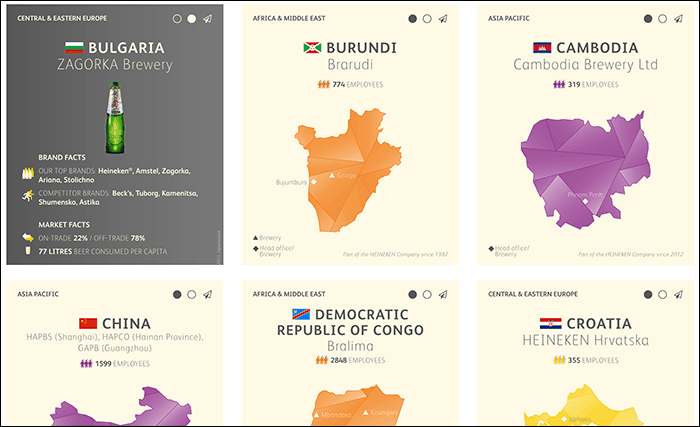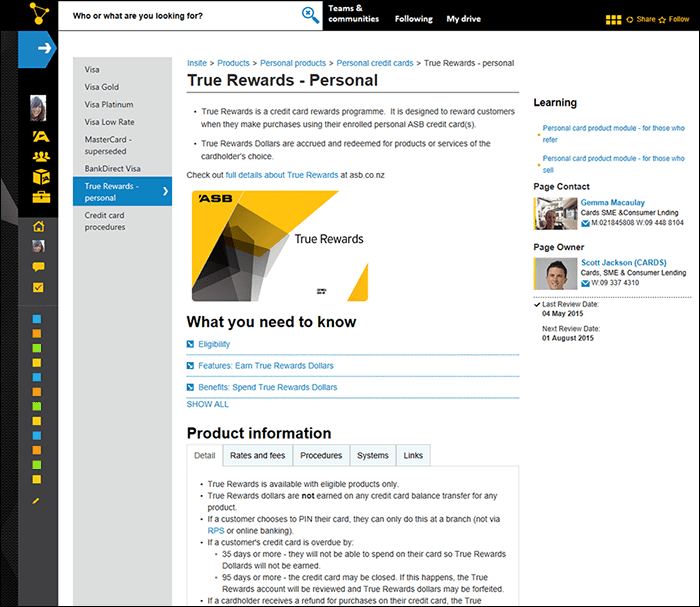
People at a BBQ from Shutterstock.
Filed under: Collaboration and social, Intranets, Latest Features
“I want all my staff to be able to pass the BBQ test.” We first heard this stated by a CEO at a local government agency, and we’ve heard it said in different terms by senior leaders since.
Every staff member, at some point or another, will be asked at a social event about the organisation they work at, and what it’s doing. (In Australia, that’s stereotypically at a BBQ; elsewhere it might be at a picnic, cocktail party or Maori hangi).
In the case of a local government agency, the question might be: “what’s happening with all the roadwork at the centre of town?”. For other organisations, it might be about products or services.
The CEO’s desire is for every staff member to be able to act as an ambassador, giving a 1-2 minute summary of what the organisation is doing and why. The expectation is not that it’s possible to rattle off in-depth information on every topic, but rather that everyone has a sense of what’s going on and can convey this effectively.
Every staff member should be able to act as an ambassador, for what we do as an organisation. The #intranet plays a key role in this.
Meeting external and internal needs
A key element of staff engagement involves having a clear view of the strategic direction of the organisation, how these goals are being met, and where individual staff fit in the wider picture. Unfortunately, the results of staff surveys often show significant weaknesses in this area. The ‘BBQ test’ can be seen as a simple way of describing this foundational element of successful staff engagement.
Beyond this, the BBQ test addresses other key business goals, including:
- improving coordination and alignment across the business
- supporting knowledge sharing and knowledge management
- reducing duplication or rework of effort
- supporting organisational and cultural transformation
Looking outwards, the BBQ test also addresses customer and stakeholder engagement. By empowering the entire workforce as ‘brand ambassadors’, the work of marketing, media and external communications teams is magnified many times over.
To help staff pass the BBQ test, a number of practical approaches can be taken by internal communications, intranet and digital workplace teams. These include:
- maintaining a strong internal communications channel
- providing a portfolio view of the organisation
- delivering regular project updates
- fostering cross-business engagement
Empowering staff as ‘brand ambassadors’ magnifies the impact of marketing, media and external communications teams many times over #digitalworkplace #internalcomms
Maintain a strong internal communications channel

Heineken goes beyond typical internal communications, to provide engaging ‘market cards’ for staff. Screenshot courtesy of Heineken.
The starting point for enabling staff to act as effective ambassadors is to ensure that they know what’s happening, not just in their area, but across the organisation. As outlined in the previous article Intranets as a news channel, this is already a key focus for most sites.
The ‘BBQ test’ further emphasises the strategic importance of internal communications, and the central role of intranets in delivering it. To best support staff as brand ambassadors, intranet news should:
- Provide internal updates at the same time — or ideally earlier — than external communications to customers or the community.
- Ensure that staff are better informed than customers (something that should be a given, but can’t be taken for granted).
- Target areas and topics identified as likely to be of key interest to external audiences.
- Provide concise messages (soundbites) that staff can use when talking with outside people.
- Ensure that the ‘human interest’ angle of updates is communicated, further supporting staff as effective ambassadors.
This is all classic internal communications territory, and an easy way for internal comms teams to support the goals of the senior leadership team.
The #intranet news channel provides a core mechanism to engage staff in what the organisation does, and why #internalcomms
Provide a portfolio view of the organisation

The ASB corporate intranet provides a strong ‘portfolio view’ of key bank products. Screenshot courtesy of ASB Bank.
Organisations don’t have to grow very large before it becomes difficult to have a clear sense of who does what, and what’s happening across all business areas. For new starters, this is a clear challenge for staff induction. The quicker staff form a strong understanding of the whole business, and how it works, the sooner they will become productive.
More widely, organisations tend to operate in silos, with little visibility of what’s happening in other areas of the organisation. Nowhere provides an up-to-date snapshot of business areas, products, services and projects.
The common mistake is to assume that information published to the public website will address these needs, and that no additional internal effort is required. Staff need different information than external customers and stakeholders. They should also ideally know more — and sooner — than external audiences.
The answer is to provide a portfolio view of the organisation, which offers an accurate and current view of key activities. For example:
- An “about the organisation” section of the intranet, targeting the needs of new starters as part of a wider induction process.
- A listing of products and services, with top-line summaries written for an internal audience, including key benefits and comparisons with competitors.
- Major projects and initiatives, proactively kept up-to-date with current status (see below for more on this).
- Organisational successes, including a summary of the benefits that have been delivered to customers or the wider community.
What does the organisation actually do? The #intranet should give a comprehensive ‘portfolio view’ of key areas and activities.
Deliver regular project updates
Most organisations are now run as a series of projects, both large and small. The challenge is keeping on top of them all, and ensuring that ‘the left hand knows what the right hand is doing’.
There is a particularly strong role for internal communications to play in this regard. To be effective, the wider internal communications strategy should involve proactive involvement with key projects and programs.
This ensures that internal communications and project updates go beyond major milestones and deliverables. This is particularly important for long-running initiatives, where progress needs to be communicated progressively throughout their lifetime.
In addition to supporting staff as brand ambassadors, these regular project updates will greatly improve cross-department alignment and collaboration, and in the process reduce overlap, rework and disconnects.
#Internalcomms teams can help the organisation to work better together, by facilitating regular, proactive project updates #intranet
Foster cross-business engagement
Being an effective brand ambassador involves the heart, not just the head. Staff-focused activities should therefore foster engagement and interest, beyond basic awareness.
The widespread introduction of collaboration and social tools offers a powerful mechanism to enhance cross-business engagement.
This includes:
- Engaging staff in corporate social responsibility (CSR) projects, via collaborative tools (see Use the intranet for good for more).
- Facilitating communities of practice, and other cross-organisation collaborative spaces.
- Using tools such as activity streams to provide a wider view of what’s happening, and to support discovery via serendipity.
- Fostering a strong social fabric across the organisation, including rich and ongoing connections between staff.
Strengthen the #social fabric within organisations to empower staff as brand ambassadors #digitalworkplace
A big benefit, but an ongoing responsibility
A ‘big bang’ approach to providing visibility across the organisation may consist of a once-per-year all staff gathering, lead by the CEO. It could also be delivered via a once-off major internal communications campaign.
These will deliver an immediate impact, but the benefits will quickly fade.
Meeting the BBQ test therefore requires an ongoing investment, and a proactive series of activities and processes. While this effort is not insignificant, the good news is that the ideas outlined above are often easy to deliver.
When the BBQ test is a priority, the intranet and wider digital workplace provide many ways of having a big impact. Now’s the time to get started!





